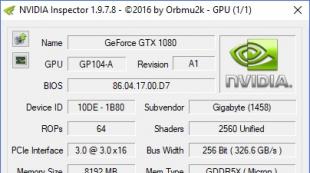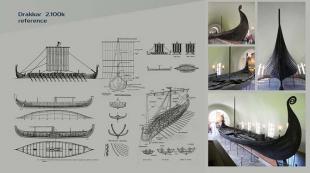What are numbers called when adding and subtracting. The name of the numbers in addition (terms, sum). IV. Formation of counting skills
Abstract open lesson mathematics
Topic: Name of numbers when subtracting
Target: create conditions for familiarization with the names of numbers when subtracting; development of the ability to solve problems and expressions, skills of oral counting.
Planned results (subjective): know the names of numbers when subtracting; be able to solve problems and find the meaning of expressions.
Universal learning activities (meta-subject):
Regulatory: be able to control the result (retrospective), control the result at the request of the teacher; to distinguish between the correct task and the incorrect one.
Communicative: be able to listen and engage in dialogue, participate in a collective discussion.
Cognitive: be able to perform logical actions: analysis, synthesis, choose the basis for comparison, seriation, classification of objects, establish analogies and cause-and-effect relationships, build a logical chain of reasoning; refer objects to known concepts based on the performance of universal logical actions.
Personal: act in accordance with the instructions for handling teaching aids, visual and counting materials, tools for constructing geometric shapes and rules of work.
Lesson script
1.Org.moment (Checking the readiness of the class and equipment; emotional mood for the lesson (cards on the desks)
Invented by someone simply and wisely
When meeting, say hello: “Good morning!”
Good morning sun and birds!
Good morning gullible people!
And everyone becomes kind, trusting.
Good morning lasts until evening.
U: I hope you are in a good mood today, let's check it at the beginning of the lesson. Before you are cards with the image of little men. One of them smiles and the other is sad. Choose one of them. If you are in a bad mood, we will try to raise it during the lesson, and those who are already in a good mood, those with a good mood go to new knowledge
Let's check the readiness for the lesson.
Well done! Let's open notebooks, retreat ... write down the number, class work.
2. Calligraphic minute.
3. Repetition of the studied material and preparation for the perception of new material
On the desk:
8-2= 6+3= 1+7= 8-4=
9-4= 5+2= 2+6= 7-3=
T: What two groups can these expressions be divided into? (some examples for addition, other examples for subtraction)
Guys, how many of you remember what numbers are called when adding? (term, term, sum)
Do we know what numbers are called when subtracting? (No)
Who will help to formulate the topic of the lesson? (name of numbers when subtracting)
Guys, before the lesson, while we were in the canteen, someone put a letter in front of us. Let's read it. Who is it from? (A note from Koshchei is read by a child)
What, guys, are we going to save the titles? (yeah)
Then get to work.
4. Oral account
Individual work on the board.
1 person (Solve examples):
2 people (Insert numbers in the missing cells)
3 and 4 people (Fish Game) One student catches a fish with an answer of 5, the other student catches a fish with an answer of 10.
Everyone else solves problems in verse
1. Brought mother goose
Six children walk on the pond.
All goslings are like balls.
3 sons, how many daughters? (3)
Vadim found 6 mushrooms,
And then 1 more.
You answer the question.
How many mushrooms did he bring? (7)
4 ripe pears
Swinging on a branch.
Pavlusha took 2 pears.
How many are left? (2)
Across the field in a straight line
The ram went to the watering hole.
3 sheep behind you
He led importantly to a watering place.
How many are there together? Consider
And make your own example! (4)
Well done boys! You did a good job. We are already close to our names. Koschei offers us to choose from three chests. They store gold, silver and our names of numbers. Guess what is in which chest, if silver is in the second chest, and not gold in the first. (1 chest - names of numbers, 2 chest - silver, 3 chest - gold)
5. Math physics minute
2 + 1 stomp your feet so many times.
3 + 2 as many times as we clap our hands.
4-1 we will squat so many times.
6-1 we'll lean in now.
1+1 we'll bounce that much.
Ah yes, the score, play and only!
6. Study of new material. Acquaintance with new terms-names of numbers when subtracting.
1. Let's make a numerical expression by reading the problem about Koshchei.
Koshchei had 7 lives, he has already lost 3. How many lives does Koshchei have left?
What action will solve the problem? (subtraction)
Who will name the solution to the problem? (7-3=4)
How to name the number 7 if it was reduced? (minuend)
How to name the number that is subtracted? (subtracted)
The number that is obtained by subtraction is the difference.
2. Work according to the textbook (p. 29)
№1. Read the entry and write an example (1 on the board, the rest in a notebook)
Task 2: Reading and writing subtraction examples using new terms.
Compose and write expressions:
Decreasing 7, subtracting 3, find the difference.
9 minus, 1 subtracted, what is the difference between the numbers?
№3 Solution of the problem.
Prove that this is a task.
Read the condition of the problem, the question of the problem.
What key words will we write in the condition?
What action will solve the problem?
Solution: 6-2=4.
Let's name the numbers when subtracting. What are the names of the numbers 6,2,4? (reduced, subtracted, difference)
7. Fizminutka. (Task for attention (3 geometric shapes are shown on the sheet. Guys, you need to remember them and draw them in your notebook).
8. Work with EPU, training disk. (Task No. 2)
Finish the sentences:
I learned in class today...
It was interesting to me…
I like it…
Branch of the regional state public educational institution for students with disabilities "Altai secondary school No. 1", Rubtsovsk
ABSTRACT
math lesson in 2nd grade
"The name of these numbers and the desired when subtracting"
TOPIC: Names of numbers in addition and subtraction. Commutative property of addition. Addition and subtraction of numbers by parts. Addition and subtraction of two-digit numbers without crossing the digit. Tasks for finding the sum and remainder, for differential comparison. Comparison of numbers. Length units. Comparison of segment lengths.
Recall the studied material: read and tell.
· The numbers used in counting objects are called natural numbers.
· Integersform natural series of numbers: 1, 2, 3, 4, 5, 6, 7, 8, 9. 10, 11, 12, ……. least in this row is number 1, largest there is no number in it. This series is built in such a way that each next number is one more than the previous one.
· Numbers that are written in one digit are called single digits; numbers that are written with two digits are double digits.
· In recording two-digit number the number on the right indicates units, the number on the left indicates tens.
· Reminder for Bitwise Comparison of Numbers
1. Comparing tens numbers: more is the number in which there are more tens; less is the one in which there are fewer tens.
2. If there are equal tens, then compare numbers of units: more is the number in which there are more units, less is the one in which there are fewer units.
· Numbers when adding: first term, second term, sum
· Commutative law of addition:from the rearrangement of the places of the terms, the sum does not change.
· Subtraction numbers: minuend, subtrahend, difference
· Components of the task:
1. condition, question
2. Numeric data you are looking for
3. Brief entry, scheme
4. Choice of action
5. Solution
6. Answer
· Inverse Problems - these are tasks that describe one plot, contain the same numbers, but in one problem some number is required, and in another problem this number is given.(the desired becomes data, and given becomes sought)
· Think like this: To answer the question of the problem, it is enough to know two numerical values. We will answer the question of the problem with an arithmetic operation ... .. (addition or subtraction)
· Tasks for difference comparison- the question of the task sounds like this: How much more (less) .....?
Let's move on to the practical part.
1) Write down the date, class work
2) Break the set of numbers into two subsets. On what basis can this be done? Underline the units with one line, the tens with two lines.
91243307197458368
3) Replace the numbers with the sum of the bit terms: 13, 24, 65, 11, 28, 87
4) Remember the composition of the numbers 2 - 10.
5) Write down the numbers of the 7th ten.
6) Write down the numbers containing 5 units
7) Insert such numbers to get true equalities.
69 + …= 7060 + …= 907…- 70 = 3
55 - … = 5480 - 6.. = 20 Homework: No. 37, 41 p. 8
Technological map of the lesson
Technology of problem-dialogical learning, health-saving technologyLesson type
combined
Teacher Goals
Organize learning activities to get acquainted with the names of numbers when adding,
To promote the development of coherent speech, working memory, arbitrary attention.
Create conditions for fostering respect for the opinions of others,a friendly attitude towards each other, a sense of mutual assistance, a conscious attitude to learning and to the study of the subject.
Learning activity goals
To introduce the terms "term", "sum";
Teachread equalities using mathematical terminology( term and sum);
- develop logical thinking, attention, communication skills.
Help education.
Reference knowledge
New knowledge
Terms, sum
Lesson objectives
1 .Educational:
- create conditions for the assimilation of mathematical concepts "terms, sum";
To consolidate the ability to name numbers when adding;
2. Developing:
Develop curiosity.
Develop the ability to reason and draw conclusions.
To promote the development of thinking, voluntary attention.
Build self-regulation skills.
3. Educational:
Cultivate accuracy and the ability to help a friend.
To cultivate a culture of behavior in frontal and individual work.
Equipment
Interactive complex, presentation, disc "Mathematics", textbook "Mathematics"
During the classes
Educational and developmental components, tasks and exercises
Teacher activity
Student activities
form of control
actions taken
formed skills
1. Organizational moment. Psychological mood.
Emotional mood for the lesson. Checking the readiness of equipment and class for the lesson.
Greeting students.
The teacher will ask you to stand up.
When he allows you to sit down, sit down.
If you want to answer - do not make noise,
Better raise your hand.
Check readiness for the lesson.
Welcome teachers. Organize their workplace check the availability of individual accessories.
Show emotional responsiveness to the words of the teacher.
2. Actualization of basic knowledge.
The game "Make a train."
Joke tasks
Game "Funny ball"
– Arrange all trailers in ascending order of results.
Solve problems:
Standing on one leg, the goose weighs 2 kg. How much will he weigh standing on two legs?(2 kg.)
I walked, I found a piglet. Let's go with a friend - how much will we find?(Can't answer.)
Vova caught 5 fish in 1 hour. How many fish will he catch in 2 hours?(Can't answer.)
2 friends were walking to school. Two more friends were walking towards them. How many friends went to school?(2.)
The teacher throws the ball and says a question or task.
Add to 42.(6.)
6 plus 1. (7.)
What number is 2 less than 8?(6.)
Reduce 10 by 1. (R.)
8 minus 1 (7.)
Subtract 2 from 4. (2)
What number is greater than 5 by 2? (7.)
Increase 7 by 2.(9.)
Trailers are placed in a chain at the board in ascending order of results.
Solve problems orally.
The one who caught the ball answers.
Learn to independently plan and carry out their actions on familiar educational material; perform actions in cooperation with the teacher according to the proposed plan.
Frontal. Oral responses
3 . Setting the goal of the lesson .
Acceptance of the goals of educational and cognitive activity.
Oh yes, the squirrel is a craftswoman!
She knits mittens for children.
Knitted three balls
Two are still lying.
Who has the answer:
How many balls does she have? (five.)
How did you find out?(3 + 2 = 5.)
You can answer this question at the end of the lesson.
– Today in the lesson we will take a closer look at the group where the "addition" action is performed.
Listen to the problem in verse, find the answer. Explain how the solution was found.
Students listen to the teacher, answer the question:Add 2 to 3 - it will be 5, 3 increased by 2 will be 5, 3 more 2 will be 5.
Learn to accept and complete the learning task.
Frontal. Teacher observation.
4 . The assimilation of knowledge and methods of action.
Explanation of new concepts.
Textbook work.
Page 86 No. 1
Numbers that add up are calledterms , and the result of the addition is calledsum .
After that, the teacher posts board table :
Name of numbers when adding

The teacher trains students in reading examples using the terms "term", "sum".
For example: the first term is 4, the second term is 2, the sum is 6. The sum of the numbers 5 and 2 is 7.
The teacher is practicing with students the use of the terms "first term", "second term", "sum of numbers".
In the same task, students will meetdifferences . The teacher asks the students a question:
Students memorize the names of the components and the results of the addition action.
Formulate and hold a learning task, transform a practical task into a cognitive one: know the name of numbers when adding.
Frontal. Teacher observation.
5. Physical education minute.
Interactive physical minute "Pinocchio"
Offers to relax, take an active part in the physical minute.
Perform the suggested movements. Focusing on a healthy lifestyle, they actively participate in a physical minute.
Prevent fatigue.
Collective. Teacher observation.
6. Consolidation of knowledge and methods of action.
Formation of counting skills.
Textbook work No. 2 (p. 86)
Propaedeutics of the theme "Task".
№3-4 (p. 87)
№ 6 (p. 87)
Work in a notebook with a printed base .
from. 29
The teacher offers to complete the examples, draws the attention of the children to the fact that when they comment, they read the expressions in different ways.
The teacher asks a well-read student to read the problem.
– What is the story you read about? What is known in the story?
– What do you need to know?
– What arithmetic operation should be performed to answer the question?
- Why do you think so?
The problem is dealt with in the same way.
The teacher offers to complete the task to consolidate the ability to add and subtract the number 2.
- Open your notebook. Read the first task.
- What are terms?(The numbers we add up.)
- What equalities are emphasized? Read them with an answer.
- Read the next task. Execute it.
- What is the equation for the first picture? (5 + 7 = 6.)
- What is the equation for the second picture? (7-1 = 6.)
- Make up stories from the pictures.
Pupils do with commentary. For example: “The first term is one, the second term is one, the value of the sum is two. The sum of the numbers two and one is three. Two multiplied by two makes four. Add one to three and you get four,” and so on.
One of the students reads the problem. Students answer the questions:
- It is known that Vasya had 6 books and he was presented with 2 more books.
- How many books did Vasya have.
-Addition.
-Because Vasya has more books.
Students explain which fairytale heroes wrong.(The hare made a mistake, since he had to perform the “addition” action, when adding, the number increases, that is, the hare had to take two steps forward, not back.)
Students complete tasks under the guidance of the teacher, answering the questions.
The rest of the tasks are done by the students themselves. Self-assessment with the help of "Traffic Light".
The ability to strive to expand one's cognitive sphere, to try to perform logical mental operations (analysis, comparison) to solve a cognitive problem.
Necessary skills for studying the topic "Task" (analysis, synthesis, thinking)
Ability to independently plan and carry out their actions on familiar educational material; perform actions in cooperation with the teacher according to the proposed plan; independently build a plan of action to solve the educational problem of the studied type.
Supervision of the teacher, work in a notebook.
self control
8. Reflective-evaluative.
Generalization and evaluation.
And now it's time to sum up. We have worked successfully.
What new did you learn in the lesson? What are the names of the numbers that add up?
What is the result of an addition called?
Students answer questions.
Choose a signal card that corresponds to the assessment of the work in the lesson.
Be able to express your thoughts with sufficient completeness and accuracy.
Give an emotional assessment of the activity in the lesson.
Teacher observation Self-monitoring and self-assessment
This lesson is devoted to the topic: "Names of the components of multiplication." The components of each mathematical operation have a name. In this lesson, we will remember in which cases it is possible to replace addition with multiplication, we will learn the names of the multiplication components. To consolidate our new knowledge, let's do some testing exercises.
In this lesson, we will get acquainted with the names of the components of multiplication.
Let's do the following task:
Exercise 1
Look at the following expressions:
Can addition be replaced by multiplication in all cases? Where possible, replace addition with multiplication.
Recall that you can replace addition by multiplication where the sums of identical terms are found. So we can replace addition with multiplication in 1 and 4 expressions.
Just as with addition and subtraction, numbers when multiplied have their own name. The first number in multiplication is called factor. The second number when multiplied is also called factor. The result of multiplication is called work.
multiplier multiplier = product
- Five times two equals ten.
- Double five, you get ten.
- The first factor is five, the second factor is two, and the product is ten.
- The product of five and two is ten.
Consider the following task. Find the value of the expression 2·9 if it is known that 2·8=16. 2 8 is two, repeat eight times (Fig. 1).
Rice. 1. 2 8 is two repeat eight times
2 9 is two repeat nine times (Fig. 2), that is, one more time. So, if we add 2 to the result of the expression 2 8, then we get the result of the expression 2 9.
Rice. 2. 2 9 is two repeat nine times
Now let's try to find out the value of the expression 2 7. 2 8 is two to repeat eight times (Fig. 1), and 2 7 is to repeat two seven times (Fig. 3), that is, one time less, which means that in order to get the result of this expression, it is necessary from the result of the expression 2 8 subtract 2.

Rice. 3. 2 7 is to repeat two seven times
Now we know how numbers are called when multiplied, and we can use these terms when reading expressions.
The components of each mathematical action have their own name.
When added:
term + term = sum
When subtracting:
minuend - subtrahend = difference
Bibliography
- Alexandrova E.I. Maths. Grade 2 - M.: Bustard, 2004.
- Bashmakov M.I., Nefyodova M.G. Maths. Grade 2 - M.: Astrel, 2006.
- Dorofeev G.V., Mirakova T.I. Maths. Grade 2 - M.: Education, 2012.
- Festival.1september.ru ().
- Shkolo.ru ().
- School-assistant.ru ().
Homework
- Learn the names of the multiplication components.
- Read the following equalities:









